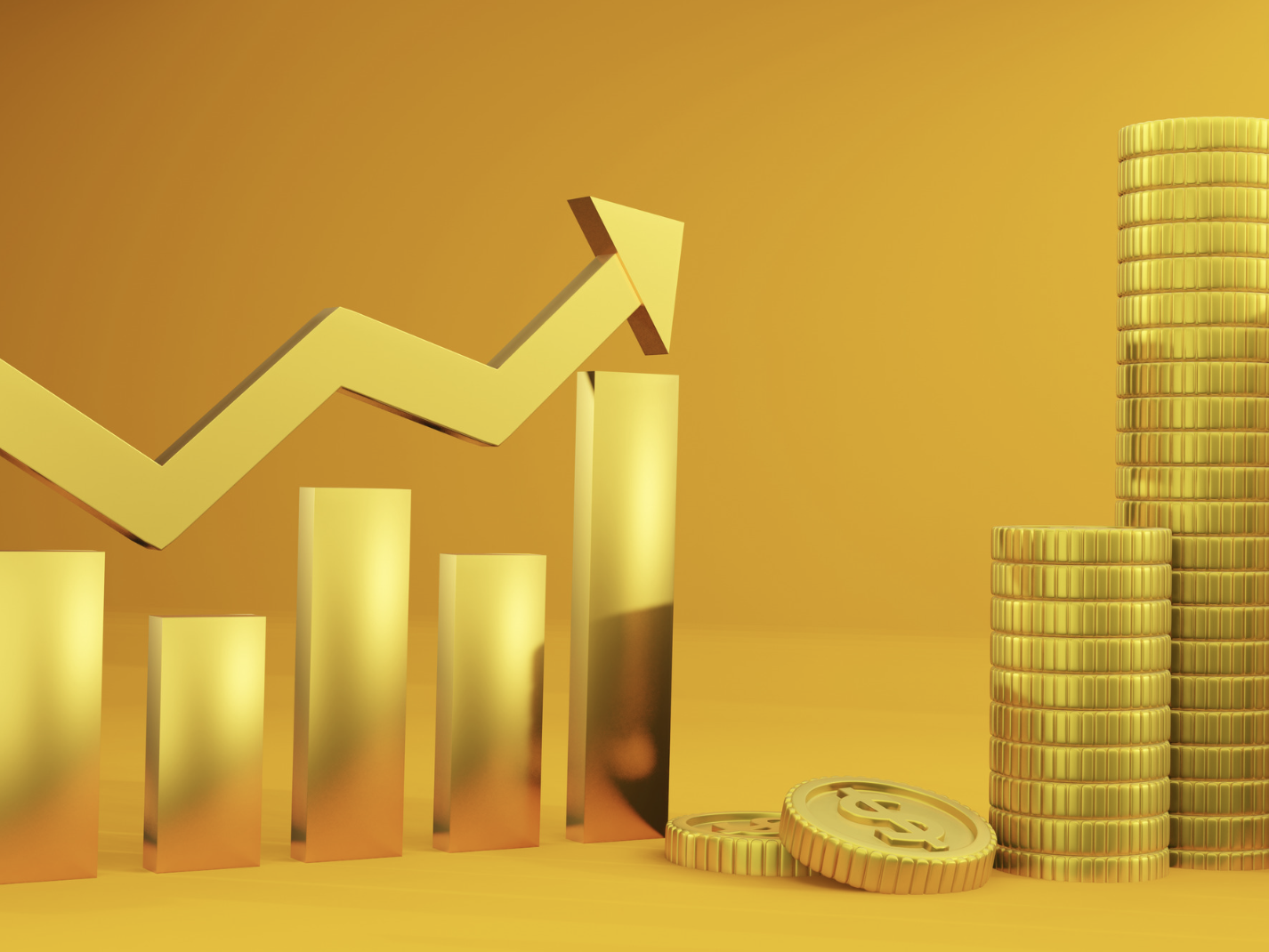Gold has been used as money for thousands of years. Over the centuries, as the metal took its place as one of the underpinnings of the global financial system, it evolved from simple coins to complex financial instruments traded around the world. Now, even though nations no longer tie their currencies directly to gold, the metal remains a portfolio diversifier for central banks alongside currency, bonds, and, in some cases, equities.
Gold can play a role as a portfolio diversifier for everyday investors because the metal tends to behave differently than stocks, bonds, and currencies. “The price of gold responds to inflation, financial stress, and interest rates, to varying degrees depending on which of these factors is of the greatest significance at any particular time,” says Philip Palumbo, CEO of Palumbo Wealth Management. “At least one of those reasons exists virtually 100% of the time, which is why gold is a staple in our portfolio models.”
Investors weighing whether to buy gold should consider these eight key points among other factors in their decision-making:
1. Gold Stocks Aren’t the Same as Physical Gold
One of the main ways people invest in gold is through stocks of companies that mine it, such as the world’s largest producer, Newmont Corp. (ticker: NEM). Explorers and developers, or companies that make royalty and streaming deals with mining firms, can also be considered mining stocks. It’s important to note, however, that this isn’t the same thing as buying gold bars and coins. While mining company share prices are influenced by the ups and downs of the price of gold, they are also subject to factors apart from the price of gold, such as bad management decisions or social unrest in the many countries where they operate. The same thing is true for exchange-traded funds (ETFs) that allow investors to hold multiple mining companies under a single ticker symbol. These funds provide instant corporate diversification and save investors money over buying all the stocks individually, but they still won’t track the spot price of gold like a gold bar would. Gold-backed ETFs, such as SPDR Gold Shares (GLD), offer a hybrid between investing in a stock and investing in physical gold. These funds are traded on an exchange like any other ETF, but instead of owning stocks, they are backed by bullion held in vaults, with each share representing exposure to a fraction. Because of that, they track the spot price of gold more closely than stocks.
New York Globex #Gold #Price Close: $1989.9 USD per oz 2023-04-28 17:15:51 EDT
— Gold Price (@goldpricetweets) April 28, 2023
2. Physical Gold Is More Than Just Bars
Investors who want to buy physical gold can turn to online bullion dealers, pawn shops, some banks, and individuals. Physical gold is often called bullion, a term that encompasses bars, coins, and rounds but not jewelry. Rounds are coin-like pieces of metal made by private mints that don’t have value as currency. Gold coins from government mints generally do have a face value. You could in theory use an American Gold Eagle to buy something up to the coin’s $50 face value. But that would be foolish as the ounce of gold the coin contains is worth nearly $2,000. Coins also have a collectible value based on their rarity, which can help insulate their value from downturns in the spot price of gold but can also mean you pay a tidy premium over the spot price of the metal.
UAE Gold Prices Rise Marginally, Global Rates Up As Investors Await U.S. Inflation Data
3. You Will Pay a Premium When You Buy Physical Gold
Gold coins generally carry more of a premium than gold bars, which don’t have the same collectible value. Size is also a reason when compared with gold bars that weigh more than the coins. You can buy bars in many different sizes, but in general, the bigger they are, the lower the markup. The largest commercially produced gold bars, at 400 ounces apiece, are the cheapest because you’re buying the gold in bulk.
4. You Need a Safe Place to Store Physical Gold
If you don’t want to store gold at home, you’ll have to pay a third party like a bank or specialty facility. If you do want to keep it at your house, you’ll likely want a good safe, and you may want to insure it. “While some will see management fees attached to funds, physical gold may come with storage and insurance-related fees,” says Richard Gardner, CEO of Modulus Global. If you want to have a gold individual retirement account (IRA), the Internal Revenue Service requires you to keep your gold with a government-approved depository. Technically, you could apply to be a non-bank trustee or custodian to keep the gold at your house, but the massive hassle likely wouldn’t be worth it.
5. Physical Gold Is Taxed at the Collectibles Rate
Speaking of tax rules, the IRS in the United States considers physical gold to be a collectible. Under those rules, profit on collectibles held for less than a year gets taxed as regular income. But if you hold the gold for more than one year you can face tax up to 28%, which is more than the maximum long-term capital gains tax of 20%. The same rules apply to gold-backed exchange-traded funds that are structured as trusts, such as GLD, as the IRS also considers those investments to be collectibles.
6. Gold Can Be Allocated or Unallocated
Investors can hold gold in allocated or unallocated accounts at banks and other depositories. Allocated gold is the property of the owner. It’s just stored by the depository. You put in a gold bar, and you get the exact same gold bar out. It’s like a sophisticated safe-deposit box. On the other hand, there are unallocated gold accounts. In these accounts, investors don’t actually own any gold, but they may be given a gold certificate as a type of receipt indicating the amount of gold they’ve bought. Buying a certain amount in this type of account is a deposit that the financial institution can then loan out, similar to regular cash deposits. Here’s another reason to do your homework and choose a reputable business if you’re going to go the unallocated route with gold certificates: Gold certificates are vulnerable to scams. Watch out for relatively new sellers offering gold certificates during times of financial uncertainty. With paper gold, there’s a chance that an unscrupulous company could sell the same gold multiple times.
7. Gold Doesn’t Provide Consistent Returns
Central to all these types of investments is the price of gold, which can move for all sorts of reasons. Stock market or economic scares can send people into gold as the value of equities declines. Movements in government bonds, which are also considered safe havens, can affect the gold price, as rising yields increase the opportunity costs of holding non-interest-bearing gold. Fluctuations in currency can also move gold prices because the precious metal is considered an inflation hedge. While over the long run gold holds up against inflation, it’s not a reliable source of income in the shorter term because of its volatility. Because of that, it’s better to view gold as a hedge to mitigate downturns in other assets or perhaps lessen your tax burden if, for example, equities are doing well but gold tanks.
8. Gold Can Have an Inverse Relationship to the U.S. Dollar
One of the biggest factors affecting the price of gold is the U.S. dollar. Because most gold is bought and sold with dollars, gains in the greenback can cause gold to decline because it becomes more expensive for those holding dollars. A declining dollar, on the other hand, is often good for gold prices. Also, because there is a fixed amount of gold in the world, and we know about how much will be mined each year, the metal is also considered a hedge against inflation. Gold bulls value that physical limitation on the amount of gold when compared to fiat currencies, which can be created at will by central banks such as the Federal Reserve. When the Fed increases the money supply with low interest rates, as it did for years after the 2008 global financial crisis, it can cause economic expansion but also inflation. That’s one reason that gold has nearly doubled since September 2007, when the Fed began cutting interest rates amid the bursting housing bubble that helped contribute to the global economic tailspin.
Warren Buffett’s Berkshire Hathaway Surpasses Federal Reserve In U.S. Treasury Bill Holdings





